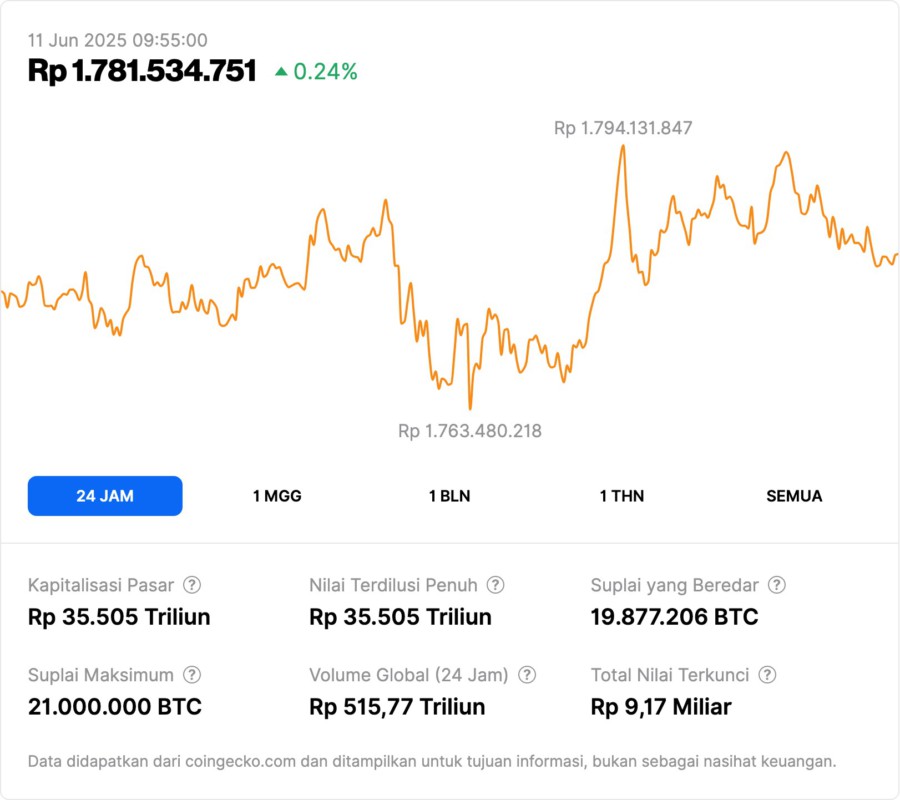Circulating! Equal-Sized Criticism from Critics of Michael Saylor’s Bitcoin Strategy

Jakarta, Pintu News – Recently, there was a heated debate between major players in the cryptocurrency world-Jim Chanos, a well-known short seller, sharply criticized the Bitcoin valuation method used by Michael Saylor, founder and driver of MicroStrategy’s crypto asset policy.
Chanos referred to the model as “financial gibberish”, which he said lacks a solid accounting basis. Not only has this criticism sparked a debate about Bitcoin valuation in public corporations, but it also highlights new developments in the crypto world that touch on how companies manage and balance assets. Here is a neutral summary of the controversy and its impact on corporate strategy and market participants.
Background to the Controversy
Jim Chanos is a prominent figure in the world of short selling. Throughout his career, he has often taken opposing positions against large corporate stocks. On June 11, 2025, Chanos publicly denounced the valuation model developed by Michael Saylor to value bitcoin held by MicroStrategy.
He called the method “complete financial gibberish” because it combines the calculation of Bitcoin’s net asset value and the growth of that value in one model, which he said was unrealistic. Saylor’s strategy is to reflect that MicroStrategy is not just a holder of Bitcoin assets, but also has cash flows generated from issuing crypto-related funding instruments.
This is part of Saylor’s public communication strategy to give the impression that his entity has growth potential beyond bitcoin accumulation. This criticism sparked a discussion on how corporations should value digital assets, especially in the volatile and sometimes illiquid crypto price cycle.
Also Read: From Dogecoin Millionaire to Pepe Millionaire: The Latest Meme Coin Investment Strategy!
Jim Chanos’ Argument Against Saylor’s Model

Chanos highlighted the technical aspects of the valuation model. According to him, multiplying Bitcoin’s net asset value by the growth target without considering interest rates, volatility, or liquidity results in an overly optimistic estimate. He added that such valuations not only harm individual investors, but also create a false impression of the company’s ability to generate more value in the future.
Furthermore, Chanos challenges the idea that preferred stock issuance strategies such as “Stride” or “Strife” promoted by Saylor are stable and secure forms of financing. According to Chanos, these instruments have limited ability to address market risk for public capital holders if the price of Bitcoin fluctuates sharply. He warns that public investors could suffer significant losses if they rely on overly fanciful model estimates.
A defense of Michael Saylor and the MicroStrategy Strategy
In response to the criticism, Michael Saylor emphasized in an interview with Bloomberg that MicroStrategy is not just another bitcoin “hodler”. He called his company a leader in issuing bitcoin-based credit instruments, and that’s what makes its valuation more complex.
Saylor also explained that the funds to buy bitcoin were obtained through the issuance of preferred shares-dubbed “Stride”, “Strife”, and “Strike”-which he said provided more financial flexibility without diluting common shares. Saylor emphasized that if the preferred shares are trading at a low premium, his company is ready to adjust its funding strategy.
He claims that, fundamentally, MicroStrategy is able to mitigate potential losses due to Bitcoin price declines. However, the strategy has raised many questions among analysts about whether the promised risk-to-return ratio is realistic, or if it is just a series of rhetorical flourishes that promise market optimism without a solid foundation.
Implications for Crypto Market and Institutional Investors
This debate has opened many eyes to how large corporations treat crypto assets as part of their balance sheets. Apart from the retail sector, the valuation debate has also been noticed by institutional players, regulators, and analysts. This highlights the need for transparency and clarity in the valuation models of intangible assets like bitcoin in financial statements.
Institutional investors are now increasingly wary of financial modeling that does not reflect the high volatility of the crypto market. On the one hand, Saylor’s strategy is drawing attention for being innovative and potentially opening up new avenues of decentralized funding. But on the other hand, Chanos and other skeptics are warning strongly about the asymmetric risks for investors, especially if the optimistic estimates fail to materialize in real market conditions.
Conclusion
This controversy reflects one of the major dilemmas in the cryptocurrency ecosystem: how to balance financial innovation with accountability and transparency. While Michael Saylor sees Bitcoin valuation as a bridge to more progressive corporate strategies, critics like Jim Chanos warn against investors being easily fooled by optimistic rhetoric. Until a universal accounting solution is implemented, it is only fair that the public keeps a close eye on the changing valuation model and its implications for the crypto market as a whole.
Also Read: Shocking Prediction: Bitcoin (BTC) Has the Potential to Reach $250,000 in 2026!
That’s the latest information about crypto. Follow us on Google News for the latest crypto and blockchain technology updates. Enjoy an easy and secure crypto trading experience by downloading Pintu crypto app via Google Play Store or App Store now.
Experience web trading with advanced trading tools such as pro charting, various order types, and portfolio tracker only at Pintu Pro. Pintu Pro Futures is also available, where you can buy bitcoin leverage, trade btc futures, eth futures and sol futures easily from your desktop!
*Disclaimer
This content aims to enrich readers’ information. Pintu collects this information from various relevant sources and is not influenced by outside parties. Note that an asset’s past performance does not determine its projected future performance. Crypto trading activities are subject to high risk and volatility, always do your own research and use cold hard cash before investing. All activities of buying andselling Bitcoin and other crypto asset investments are the responsibility of the reader.
Reference
- Sophie Kim/TokenPost.Jim Chanos Slams Michael Saylor’s Bitcoin Valuation Model as “Financial Gibberish”. Accessed June 11, 2025.
- Featured Image: CryptoSlate




